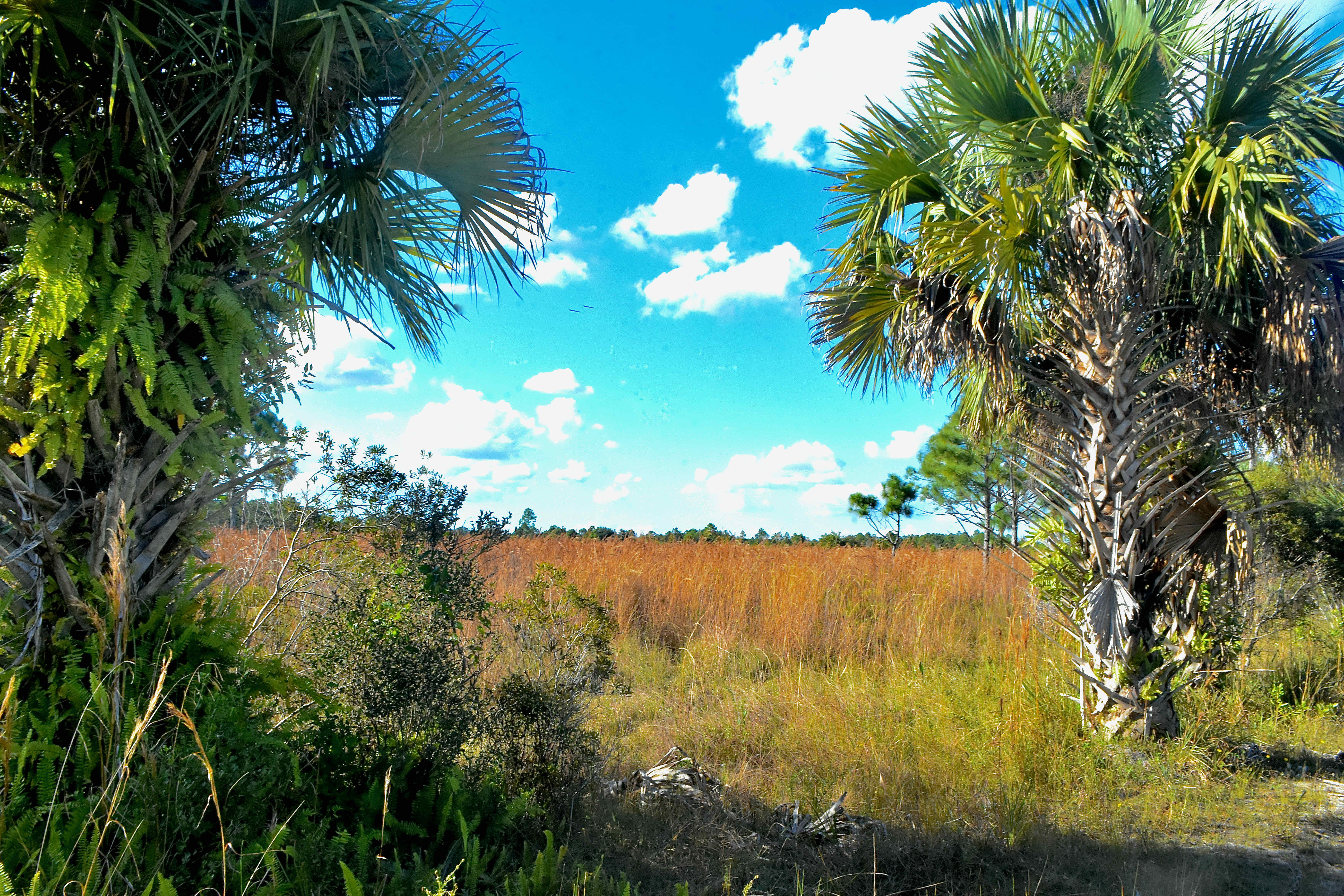There are certain dynamics at work that determine the habitat of a particular piece of land. The most important: the hydroperiod, or the amount of time that the land is covered by water. Historically most of Loxahatchee Slough Natural Area was covered with water 50 to 80 percent of the year. In drier land, pine flatwoods formed; places that were slightly lower in elevation, where water tends to collect became wet prairies, like the one pictured above. It looks like a vast grassland, but the presence of water much of the year inhibits the growth of slash pines and keeps the land "open." The other dynamic is fire. Under natural conditions, the occasional fire restricts the growth of cypress trees and the formation of a swamp. The construction of the C-18 canal in 1958 changed the hydroperiod on sections of Loxahatchee Slough so that pine flatwoods began to dominate more and more of the land. The Army Corps of Engineers moved to reverse that in 1979; according to Palm Beach County officials, more than half of the slough is now flatwoods. Still, Loxahatchee Slough remains a very wet place.
RETURN TO THE TOUR PAGE. — || — RETURN TO THE MAIN PAGE

